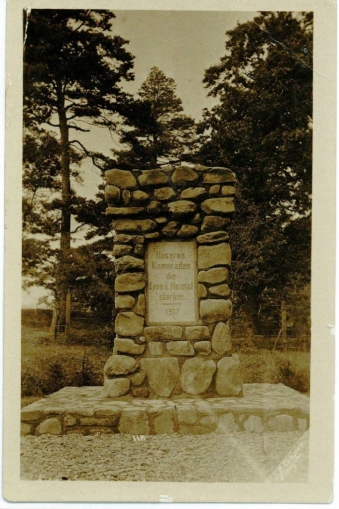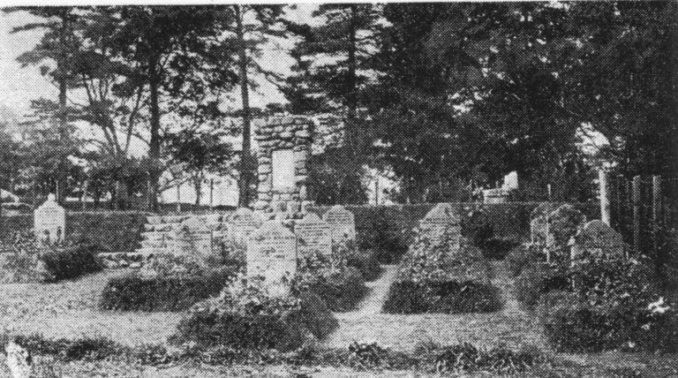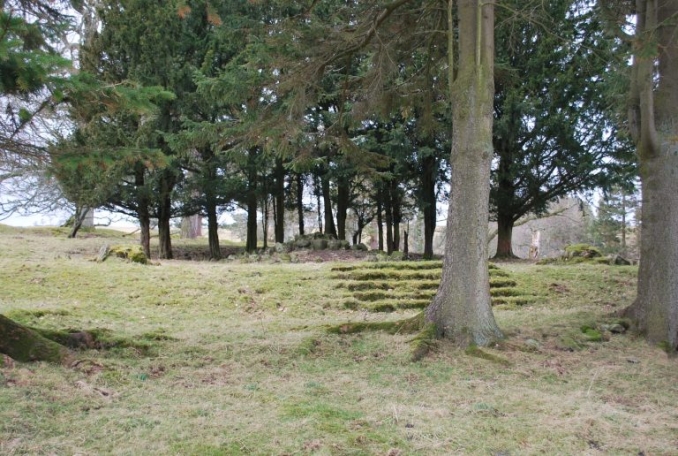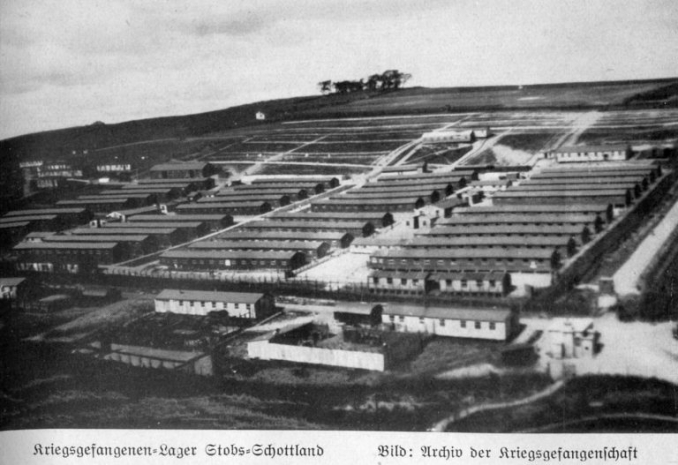Plans to restore memorial cairn as one of Scotland's biggest archaeology projects launched at World War One internment camp
The First World War lasted from 28 July 1914 to 11 November 1918. Originating in Europe, by the end of one of the deadliest conflicts in history, over nine million combatants and seven million civilians had died as a result of the war. During the First World War, many thousands of German, Austrian and other Central Power civilian men were interned in Britain. These were made up of civilians already present in the country in August 1914, along with others brought to Britain from various parts of the world. As the war went on enemy combatants from the Western Front, as well as naval personnel and some members of zeppelin crews were also imprisoned in camps. Prisoners were interned in a large number of locations, some of which were within the Celtic nations, including camps in Scotland (Alba), Isle of Man (Mannin) and Wales (Cymru). Many of these people spent years behind barbed wire away from their families.
One such camp was Stobs Camp near Hawick (Scottish Gaelic: Hamhaig) in southern Scotland. The PoW camp was built on the slope of Winningtonrig Farm with a total of 80 wooden huts, measuring 120 feet by 20 feet each were enclosed within a barbed wire compound. The first civilian internees arrived at Stobs on 2 November 1914 and the first of several thousand military prisoners of war started to arrive early in 1915. The last group of civilians were moved to Knockaloe on the Isle of Man in July 2016. The civilian alien population became overwhelmingly concentrated on the Isle of Man, with over 23,000 internees along with military and naval prisoners placed on the island.
Following preliminary work during 2016, some of those seeking to uncover the history of Stobs Camp visited the Isle of Man to compare the work undertaken in regard to Knockaloe by Manx Heritage and made links with the Knockaloe Visitor Centre project. Now one of Scotland's biggest archaeology projects has been launched at the Stobs Camp. Home to 4,500 German prisoners of war during the conflict Stobs Camp has been described as the best preserved World War One internment camp in the world, due to the excellent state of preservation of some of its infrastructure. It is hoped to unearth the detailed history of the internment camp so that the story of Stobs will not be lost and the buildings that remain prevented from further deterioration.
A further plan of the Stobs project is to restore a cairn built by prisoners to remember their comrades at Stobs. A cemetery for prisoners who died in captivity was added to the camp in 1915. The cairn memorial was raised in 1917 and bore the words ‘To our comrades who died far from home' and had a ring of yew trees planted behind it. Following an agreement between the British and German governments, the German War Graves Commission (Volksbund Deutsche Kriegsgraberfursorge) made arrangements to transfer the graves of German servicemen and civilian internees of both the First and Second World Wars from scattered burial grounds to a new cemetery established at Cannock Chase. In 1962, those laid to rest at the cemetery at Stobs were transferred to Cannock Chase. As part of the new Stobs project, the Borders Family History Society is tracing the ancestors of the German soldiers and seamen interred at Stobs. As well as restoring the cairn the plan is to host a special ceremony on Armistice Day 2018, on the 100th anniversary of the end of World War One.
Images: Stobs Memorial 1918. Stobs PoW Cemetery. Cemetery today. Stobs Camp (pictures from Stobs Camp Project website).









